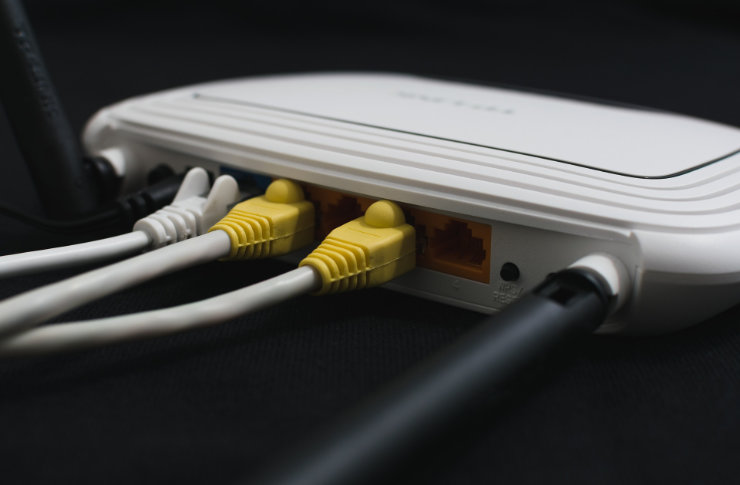Internet Options for Seniors: Affordable, Reliable Connections
Reliable internet can open doors for seniors — from staying in touch with loved ones and accessing telehealth to enjoying entertainment and shopping from home. This guide explains senior-friendly plans, discounts (including Lifeline), safety tips, and how to choose the best provider to stay connected affordably and securely.

The internet has become a vital tool for older adults, offering ways to communicate, manage health, learn, and enjoy leisure time. For many seniors, a dependable online connection supports independence—allowing video chats with family, virtual medical appointments, research into health topics, online learning, and shopping without leaving home. This article walks through appropriate plans, money-saving programs, safety steps, and practical considerations when selecting a provider.
Which internet plans suit seniors best?
Seniors typically have predictable online habits, so the right plan balances cost and capability. Basic plans (roughly 10–25 Mbps) usually handle everyday tasks such as browsing, email, social media, and standard-definition video calls. If a senior regularly streams movies, joins group video calls, or has several devices connected at once, a mid-tier plan (around 50–100 Mbps) provides smoother performance.
Connection type matters too. DSL and cable are common in many areas and often cheaper, while fiber-optic services deliver faster, more consistent speeds where available. Satellite internet reaches remote locations but can be slower and have data limits. Some providers also sell bundled packages that include TV or phone service; bundles may offer convenience and savings for seniors who still use traditional television.
Keep in mind that advertised speeds are often “up to” values. Real-world performance depends on network congestion, your router, and the number of devices in use.
Discounts, programs, and low-cost options
Many companies and programs exist to help seniors keep monthly internet costs manageable. Some providers offer age-based discounts, waived installation fees, or lower-cost plans designed for low-usage households. Bundles that include a free modem or waived setup can reduce upfront expenses.
Government and nonprofit initiatives can also assist. The Federal Communications Commission’s Lifeline program provides qualified low-income consumers discounts on phone and internet service. Local community centers, libraries, and nonprofit organizations may run digital literacy programs or help seniors sign up for subsidized services. Comparing offers from multiple providers in your area often uncovers the best combination of price and features.
Practical steps for staying safe online
As seniors increase their online activity, protecting personal information is essential. Many ISPs include basic protections like firewalls and antivirus tools, but individuals should take additional precautions:
- Create strong, unique passwords for each account and consider a password manager.
- Beware of unsolicited calls, texts, or emails that ask for personal details—these can be phishing attempts.
- Keep computers, phones, and other devices updated with the latest security patches.
- Use a secured, private Wi‑Fi network rather than public hotspots for banking or medical access.
- Enable two-factor authentication where available, especially for email and financial accounts.
Several providers and community organizations offer tutorials, printed guides, or in-person workshops to help seniors recognize scams and practice safe online behavior.
What to weigh when choosing a provider
Selecting the best internet service involves more than price. Consider these factors:
- Connection type and availability: Fiber or cable is preferable for speed and reliability when available.
- Speed relative to needs: Match plan speed to typical activities to avoid overpaying.
- Reliability and outage history: Research local reviews and outage reports for prospective companies.
- Customer support: Easy-to-reach, patient customer service and in-home or remote setup help are especially valuable for seniors.
- Contract flexibility: No-contract plans and month-to-month options help avoid long-term commitments.
- Fees and equipment costs: Check installation charges, modem/router rental fees, and data caps.
Asking neighbors or local senior centers about their experiences with specific providers can provide real-world insight into service quality and support.
| Provider | Plan Name | Typical Monthly Cost* | Notable Features |
|---|---|---|---|
| Comcast Xfinity | Internet Essentials | $9.95 | 50 Mbps, no credit check, free installation |
| AT&T | Access | $10.00 | 10 Mbps, no contract, free installation |
| Spectrum | Internet Assist | $14.99 | 30 Mbps, free modem, no data caps |
| CenturyLink | Lifeline Internet | $9.25 | 15 Mbps, no contract, discounted installation |
Prices and availability vary by location and may change. Independent research is advised before making financial decisions.
Final thoughts
A dependable internet connection can significantly improve a senior’s quality of life—facilitating social contact, access to healthcare information, entertainment, and essential services like online shopping and bill paying. By evaluating speed needs, checking for senior discounts and government assistance programs, prioritizing security, and confirming strong customer support, seniors can find affordable, user-friendly internet options that match their lifestyle.
This article is for informational purposes only and should not be considered medical advice. Please consult a qualified healthcare professional for personalized guidance and treatment.





